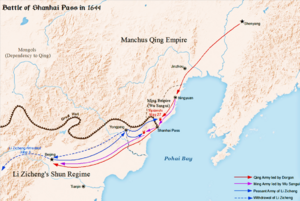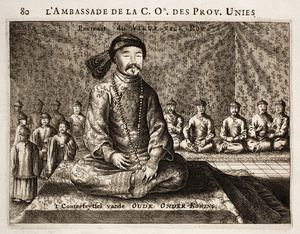Dorgon facts for kids
Quick facts for kids Dorgon |
|||||||||||||
|---|---|---|---|---|---|---|---|---|---|---|---|---|---|
| Prince Rui of the First Rank | |||||||||||||
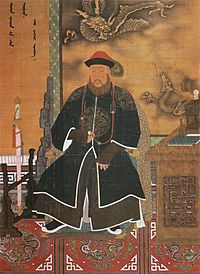
Portrait of Dorgon as regent in imperial regalia
|
|||||||||||||
| Prince Regent of the Qing Empire | |||||||||||||
| Reign | 1643–1650 | ||||||||||||
| Co-Regents | Jirgalang (1643–1644) | ||||||||||||
| Assistant-Regents | Jirgalang (1644–1647) Dodo (1647–1649) |
||||||||||||
| Prince Rui of the First Rank | |||||||||||||
| Reign | 1636–1650 | ||||||||||||
| Predecessor | None | ||||||||||||
| Successor | Chunying | ||||||||||||
| Born | 17 November 1612 Yenden (present-day Xinbin Manchu Autonomous County, Fushun, Liaoning) |
||||||||||||
| Died | 31 December 1650 (aged 38) Kharahotun (present-day Chengde, Hebei) |
||||||||||||
| Consorts | Lady Borjigit Borjigit Batema
(died 1650)Lady Tunggiya Lady Borjigit Lady Borjigit Lady Borjigit Princess Uisun |
||||||||||||
| Issue | Donggo | ||||||||||||
|
|||||||||||||
| House | Aisin-Gioro | ||||||||||||
| Father | Nurhaci | ||||||||||||
| Mother | Empress Xiaoliewu | ||||||||||||
| Dorgon | |||||||
|---|---|---|---|---|---|---|---|
| Chinese name | |||||||
| Traditional Chinese | 多爾袞 | ||||||
| Simplified Chinese | 多尔衮 | ||||||
|
|||||||
| Manchu script name | |||||||
| Manchu script | ᡩᠣᡵᡤᠣᠨ | ||||||
| Transcription name | |||||||
| Transcription | Dorgon | ||||||
Dorgon (Manchu: ᡩᠣᡵᡤᠣᠨ, Möllendorff: dorgon, meaning "badger"; 17 November 1612 – 31 December 1650) was an important Manchu prince and a powerful leader in the early Qing dynasty. He was born into the House of Aisin-Gioro as the 14th son of Nurhaci, who founded the Later Jin dynasty. This dynasty later became the Qing dynasty.
Dorgon began his career fighting in wars against the Ming dynasty, Mongols, and Koreans. These battles happened when his older brother, Hong Taiji, was the ruler. After Hong Taiji died in 1643, Dorgon was involved in a struggle for who would become the next emperor. He and Hong Taiji's oldest son, Hooge, eventually agreed to let Hong Taiji's ninth son, Fulin, become the emperor. Fulin became known as the Shunzhi Emperor.
Dorgon served as a Prince-Regent from 1643 to 1650, guiding the young Shunzhi Emperor. In 1645, he received the special title "Emperor's Uncle and Prince-Regent." This title was changed to "Emperor's Father and Prince-Regent" in 1649.
During Dorgon's time as regent, Qing armies took over Beijing, the capital of the fallen Ming dynasty. They slowly conquered the rest of China. Dorgon also made a rule that all Han Chinese men had to shave the front of their heads and wear their hair in a queue, like the Manchus. He died in 1650 during a hunting trip. After his death, he was given the honorary title of an emperor, even though he never ruled as one. However, a year later, the Shunzhi Emperor removed Dorgon's titles. Dorgon's honorary titles were given back to him by the Qianlong Emperor in 1778.
Contents
Early Life of Dorgon
Dorgon was born into the Manchu Aisin-Gioro family. He was the 14th son of Nurhaci, the leader of the Later Jin dynasty. His mother was Nurhaci's main wife, Lady Abahai. His full brothers were Ajige and Dodo. Hong Taiji was one of his half-brothers.
Dorgon was a very important son of Nurhaci. He played a key role in the Qing army taking over Beijing in 1644. During Hong Taiji's rule, Dorgon fought in many military campaigns. These included conquering parts of Mongolia and Korea. He fought against the Chahar Mongols in 1628 and 1635.
How Dorgon Rose to Power
After Hong Taiji died in 1643, Dorgon and Hong Taiji's oldest son, Hooge, both wanted to become emperor. They decided to step back and let Hong Taiji's ninth son, Fulin, take the throne. Fulin became the Shunzhi Emperor.
Since the Shunzhi Emperor was only six years old, Dorgon and his cousin Jirgalang were chosen to rule as co-regents. In 1645, Dorgon was given the title "Emperor's Uncle and Prince-Regent." Later, in 1649, his title changed to "Emperor's Father and Prince-Regent."
Dorgon's Time as Regent (1643–1650)
Taking Control of the Government
On February 17, 1644, Jirgalang, who was a good military leader but not interested in daily government tasks, gave Dorgon control of all official matters. After a supposed plan by Hooge to weaken the regency was found out, Hooge lost his princely title. Dorgon then replaced Hooge's supporters with his own. This gave him more control over the Qing government and its army by June 1644.
In early 1644, Dorgon and his advisors were planning how to attack the Ming Empire. At the same time, peasant rebellions were getting close to Beijing. On April 24, 1644, rebel forces led by Li Zicheng broke into the Ming capital. The last Ming emperor, the Chongzhen Emperor, took his own life.
When Dorgon heard this news, his advisors told him to use this chance. They suggested he present the Qing as saviors of the fallen Ming Empire. This would help the Qing claim the right to rule China. The last challenge for Dorgon to reach Beijing was Wu Sangui. Wu Sangui was a former Ming general guarding the Shanhai Pass on the Great Wall.
Wu Sangui was stuck between the Manchu army and Li Zicheng's rebels. He asked Dorgon for help to defeat the rebels and bring back the Ming Empire. Dorgon asked Wu Sangui to join the Qing Empire instead, and Wu had to agree. With help from Wu Sangui's soldiers, the Qing army won a big victory against Li Zicheng at the Battle of Shanhai Pass on May 27. Li Zicheng and his defeated troops looted Beijing for several days. They left the capital on June 4 with all the riches they could carry.
Setting Up the Capital in Beijing
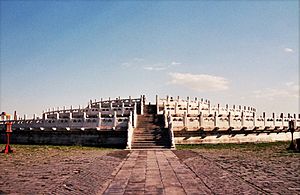
After six weeks of harsh treatment by rebel troops, Beijing's people welcomed their new rulers on June 5. They were surprised to see Dorgon, a Manchu prince, present himself as the Prince-Regent. Dorgon set up his office in Wuying Palace, one of the few buildings left after Li Zicheng burned the Forbidden City. Qing soldiers were told not to loot. Their good behavior made the change to Qing rule quite smooth.
However, Dorgon also ordered that anyone claiming to be a Ming emperor, or their supporters, should be executed. On June 7, Dorgon told officials that if people surrendered, they could keep their jobs. He also ordered all men to shave the front of their heads and wear their hair in queues. He had to cancel this rule three weeks later because it caused many rebellions around Beijing.
Dorgon welcomed the Shunzhi Emperor to Beijing on October 19, 1644. On October 30, the six-year-old emperor performed important ceremonies at the Altar of Heaven. On November 8, a formal ceremony was held to make the Shunzhi Emperor the official ruler. During this event, Dorgon's title was raised to "Uncle and Prince Regent." His co-regent, Jirgalang, was given a lower title. By June 1645, Dorgon ordered that all official papers call him "Imperial Uncle Prince Regent."
To help different groups get along, Dorgon made a rule in 1648. It allowed Han Chinese men to marry Manchu women. This was meant to create harmony between the two groups.
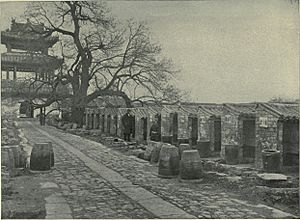
One of Dorgon's first orders was to clear out the northern part of Beijing. This area was given to the Bannermen, including Han Chinese Bannermen. This was done to give them a place to live. Farmland outside the capital was also given to Qing troops. Former landowners became tenants, paying rent to the new Bannermen landlords. This change caused problems for many years.
In 1646, Dorgon also brought back the imperial civil service examinations. These tests were used to choose government officials. They were held every three years, just like under the Ming Empire. The first test under Qing rule asked how Manchus and Han Chinese could work together. This showed the Qing's goal to unite the country.
Conquering the Ming Dynasty
Under Dorgon's leadership, the Qing army conquered almost all of China. They pushed the remaining Ming loyalists to the far southwest. After putting down revolts in Hebei and Shandong in 1644, Dorgon sent armies to find Li Zicheng. Li had set up his base in Xi'an after leaving Beijing. Qing armies forced Li to leave Xi'an in February 1645. He was killed in September 1645.
From Xi'an, in April 1645, Qing forces attacked the rich region of Jiangnan. This area was south of the Yangtze River. Here, the Prince of Fu had set up a Ming loyalist government. The Southern Ming forces were not united, which made them weak. Qing armies moved south, taking the city of Xuzhou in May 1645. They then moved to Yangzhou, a key city for the Southern Ming.
Yangzhou was bravely defended by Shi Kefa, but it fell to Qing cannons on May 20 after a week-long siege. Dorgon's brother, Dodo, then ordered a terrible slaughter of Yangzhou's people. This act of terror made other cities in Jiangnan surrender to the Qing. Nanjing surrendered without a fight on June 16. The Qing forces quickly captured the Ming emperor and took over Jiangnan's main cities. By early July 1645, the border between the Qing and Southern Ming was pushed south to the Qiantang River.
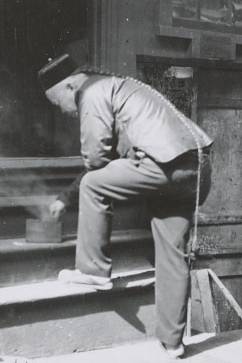
On July 21, 1645, Dorgon issued a new rule. All Han Chinese men had to shave the front of their heads and wear their hair in queues, just like the Manchus. If they did not, they would be killed. This rule helped the Manchus tell who was loyal. But for many Chinese, this hairstyle was shameful. It went against their beliefs. This rule caused many Chinese people to fight against Qing rule.
The people of Jiading and Songjiang resisted and were massacred by a former Ming general, Li Chengdong. Jiangyin also fought against Qing troops for 83 days. When the city walls were broken, the Qing army killed almost everyone in the city. These massacres ended armed resistance in the Lower Yangtze region.
After Nanjing fell, two more Ming leaders tried to set up new governments. But they did not work together. In July 1646, a new Qing campaign led by Bolo attacked these groups. One Ming emperor was caught and killed on October 6. His adopted son, Zheng Chenggong, fled to the island of Taiwan. By November, the remaining Ming resistance in Jiangxi province fell to the Qing.
In late 1646, two more Southern Ming leaders appeared in Guangzhou. These two Ming groups fought each other. On January 20, 1647, a small Qing force captured Guangzhou. They killed one Ming emperor and forced the other to flee. However, in May 1648, a former Ming general rebelled against the Qing. This helped the Ming emperor take back much of southern China. But new Qing armies reconquered these areas in 1649 and 1650. The Ming emperor had to flee again. On November 24, 1650, Qing forces led by Shang Kexi captured Guangzhou and killed many people.
Meanwhile, in October 1646, Qing armies led by Hooge reached Sichuan. Their goal was to defeat the bandit leader Zhang Xianzhong. Zhang was killed in battle on February 1, 1647. Also in 1646, Muslim leaders revolted against Qing rule in Ganzhou (Gansu). They said they wanted to bring back the Ming dynasty. These rebels were defeated by 1650.
Dorgon's Death
Dorgon died on December 31, 1650, during a hunting trip in Kharahotun (today's Chengde, Hebei). He was given the title "Emperor Yi" and the temple name "Chengzong" after his death. This was special because he was never an emperor during his life. The Shunzhi Emperor even bowed to Dorgon's coffin at the funeral.
Dorgon's death happened when Emperor Shunzhi was about 13 years old. This was an age when the emperor would no longer need a regent to rule for him.
| Styles of Dorgon, Prince Rui |
|
|---|---|
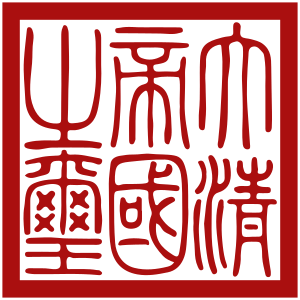 |
|
| Reference style | His Imperial Highness |
| Spoken style | Your Imperial Highness |
| Alternative style | Prince Rui/Prince Regent |
Dorgon's Titles Removed and Given Back
In 1651, Dorgon's political rivals, led by Jirgalang, told the Shunzhi Emperor about things Dorgon had supposedly done wrong. As a result, Shunzhi removed Dorgon's titles after his death. Dorgon's name was also removed from the imperial family records. His mother, Empress Xiaoliewu, was also removed from the records. This was a political move to prevent any future heirs from her line from claiming the throne.
However, Dorgon's good name was restored during the reign of the Qianlong Emperor. In 1778, the Qianlong Emperor gave Dorgon the posthumous name zhong (忠; "loyal"). So, Dorgon's full title became "Prince Ruizhong of the First Rank." The word "loyal" was chosen to show that the earlier accusations were not true.
Dorgon's Legacy
After Dorgon led Manchu and Han Chinese troops into Beijing on June 6, 1644, he quickly brought order back. He punished corruption and said that all Ming officials could keep their jobs. He also brought back the system of civil service exams to find talented people across the country.
Dorgon is often seen as a good and dedicated leader. However, he is also blamed for some policies that caused problems and bloodshed in China. These included:
- Forced Head-Shaving and Manchu Clothing: Chinese men had to shave the front of their heads and wear their hair in queues, like the Manchus. If they refused, they could be killed. This led to massacres in cities that resisted.
- Land Enclosure and Taking Homes: To give land to the Bannermen, they were allowed to take "unused" land. But this rule was often misused to take farms and homes that were already lived in.
- Forced Slavery and Anti-Escapee Laws: Bannermen were allowed to take common people and make them slaves. Laws were made to stop these slaves from escaping. People who helped escaped slaves could be executed.
Physical Appearance
Japanese travelers described Dorgon as a man of 34 or 35 years old. He had slightly dark skin and sharp eyes. He was handsome, tall, and slim, with a shiny and beautiful beard.
Family
Primary Consorts
- Consort, from the Khorchin Borjigit clan
- First primary consort, from the Khorchin Borjigit clan (died January 1650), named Batema. She was later honored as Empress Jingxiaoyi.
- Second primary consort, from the Tunggiya clan
- Third primary consort, from the Zha'ermang Borjigit clan
- Fourth primary consort, from the Khorchin Borjigit clan
- Fifth primary consort, from the Khorchin Borjigit clan
- Princess Uisun, from the Yi clan of Jeonju (1635–1662), named Aesuk
Secondary Consort
- Secondary consort, from the Yi clan of Jeonju
- First daughter (born 1638), named Donggo
Images for kids
See also
 In Spanish: Dorgon para niños
In Spanish: Dorgon para niños


